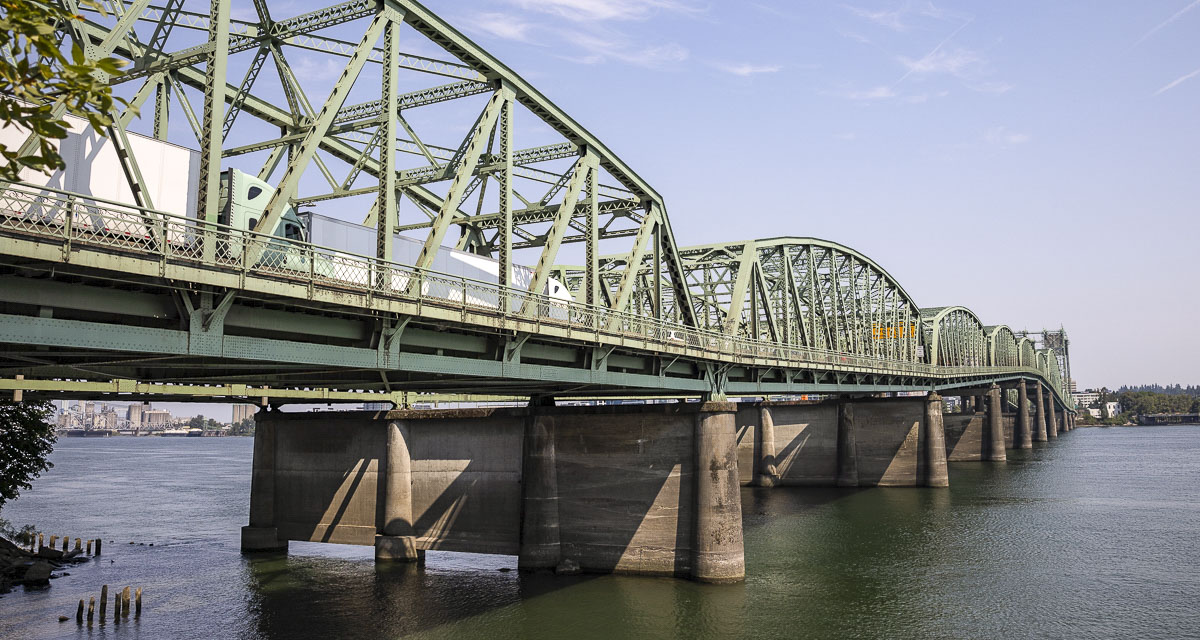
The joint commission is hosting upcoming public meetings about the draft EIS and taking public comment through the middle of November
Carleen Johnson
The Center Square Washington
The Joint Washington State and Oregon Transportation Commissions met Tuesday (Oct. 1) in Vancouver to discuss and adopt toll recommendations for the yet-to-be-built Interstate Bridge Replacement project that connects Washington and Oregon.
It began as the Columbia River Crossing project in 2004, but after years of study and evaluation, that project was suspended in 2014 due to a lack of regional consensus.
In 2019, state leaders resurrected the plan and created the joint commission made up of transportation leaders from Oregon and Washington.
“We really hit a major milestone 11 days ago when we were able to publish out draft environmental impact statement,” said Frank Green, assistant program administrator on the IBR program. “We’re really trying to get out there and ask the public to provide comments to us on the EIS.
The draft EIS indicates short-term and long-term property and property rights effects that include the removal of up to 76 homes and 39 businesses in an acquisition area of more than 36 acres, depending on which final design is adopted.
The joint commission is hosting upcoming public meetings about the draft EIS and taking public comment through the middle of November.
“We look to have a final supplemental EIS by mid to late 2025,” said Green.
Construction could begin as early as late 2025.
Before a discussion on tolling options, there was an opportunity for public comment.
Debra Kelz has lived in Vancouver since 1971 and told commission members she often has to drive into Oregon for medical reasons.
“I’m very concerned about having to pay tolls to get my medical care,” she said.
Paul Edgar told commissioners he objects to adding light rail to the bridge.
“It adds three billion to the total cost,” Edgar said. “WSDOT [Washington State Department of Transportation] will pay some of that, ODOT [Oregon Department of Transportation] will pay some, but a significant portion will have to be paid by tolls.”
“Without having a vote of the people to subsidize light rail, you’re barking up the wrong tree,” he said. “It should be eliminated from the proposal.”
Dean Suhr is with an Oregon group hoping to get a ballot measure qualified to force a vote of the people before a decision is made to toll the bridge.
“It’s going to force transparency and accountability,” said Suhr, who failed to get enough signatures to qualify a measure for the ballot this year.
He said he will try again in 2026.
Suhr made reference to something previously reported by the Center Square – that is, the project’s increasing cost.
“The budget for this project in 2020 was $4.8 billion, last December it was $6.5 billion, and I’m hearing that with the latest cost estimates what we’ll get in 2025 is about $9 billion,” said Suhr, who urged commission members to give other interested parties a chance to be more involved.
“We really want to be at the table discussing all this with you,” he explained. “Public comment is nice, but we want to be at the table.”
Ed Barry with the bi-state tolling subcommittee gave an update on potential scenarios for tolling the bridge, ahead of a final vote taken by the commission.
One of the points of discussion was potential toll exemptions or discounts for members of 10 federally recognized tribes in the region.
Washington state already allows tolling exemptions for a handful of tribes, including the Nez Perce and Yakama Nation.
The commission has considered several scenarios for tolling. At the end of Tuesday’s meeting, members voted in favor of what it called the Level 3 tolling scenario for further study.
Toll rates could start as low as $1.55 to $3.20 per trip, depending on time of day and traffic volume, or start out at $2 to $4.70 at the top end.
In that scenario, members of the bi-state tolling subcommittee told the commission they would plan to leverage at least $1.24 billion in toll revenue for capital funding to as much as $1.6 billion.
The plan calls for charging big trucks up to four times the toll of other drivers and giving 50% discounts to low income drivers.
Toll rates would go up at least 2% annually and would kick in before the bridge is complete, starting in spring of 2026.
This report was first published by The Center Square Washington.
Also read:
- Expect delays on northbound I-5 near Ridgefield through May 9Northbound I-5 travelers near Ridgefield should expect delays through May 9 as crews work on improvements at the Exit 14 off-ramp to support future development.
- 6-cent gas tax hike central to new transportation deal in WA LegislatureA proposed 6-cent gas tax hike is central to a transportation funding deal under negotiation in the Washington Legislature, aimed at raising $3.2 billion over six years.
- Letter: C-TRAN Board improper meeting conductCamas resident Rick Vermeers criticizes the C-TRAN Board for misusing parliamentary procedure during a controversial vote on light rail.
- Opinion: TriMet’s ‘fiscal cliff’ a caution for Clark County taxpayersRep. John Ley warns that Portland’s financially troubled TriMet transit system could pose major risks to Clark County taxpayers as the I-5 Bridge replacement moves forward.
- Travel Advisory: Expect daytime delays on northbound I-5 near Woodland for guardrail repairs, April 18WSDOT will close the left lane of northbound I-5 near Woodland on Friday, April 18, to repair guardrail and improve driver safety.









